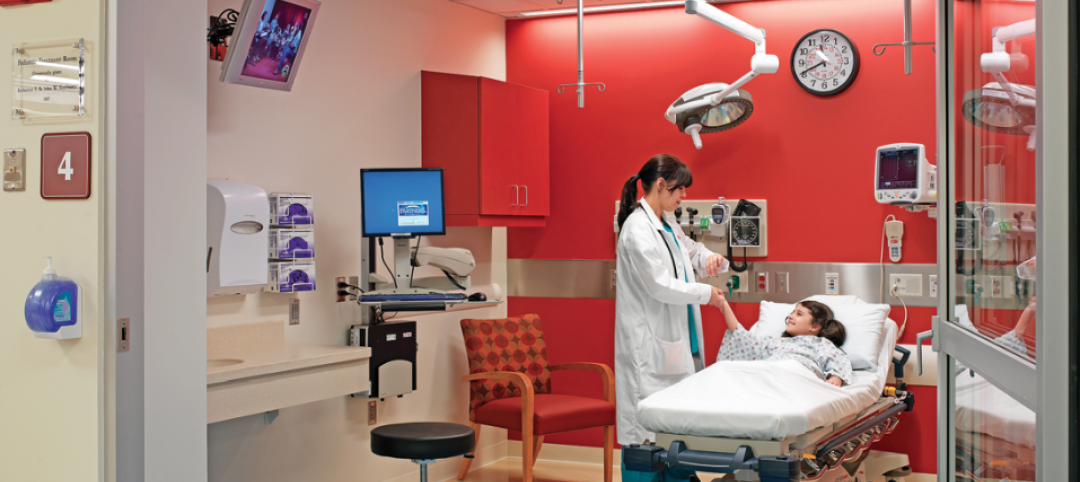1. To optimize a space for speech intelligibility, designers should specify products such as fiberglass ceiling tiles that have a noise reduction coefficient (NRC) of:
A. Less than 0.5
B. Greater than 0.5
C. Exactly 1.0.
D. Greater than 1.0
2. Which of the following statements is NOT true, according to research from John Hopkins University and the University of Kansas?
A. Sound pressure levels in hospitals decrease each year by 0.40 db(A).
B. Sound pressure levels in hospitals are increasing each year by 0.40 db(A).
C. Average speech intelligibility ratings for U.S. classrooms in 2000 were 75% or less.
D. Average sound levels at Johns Hopkins Hospital have exceeded the range at which normal conversation takes place.
3. Which of the following is a design element of a suspended ceiling strategy for sound absorption, sound isolation, or both?
A. Using vibration isolation hangers.
B. An acoustically absorptive ceiling layer with a large air gap behind it.
C. Acoustical ceiling tile on a grid.
D. All of the above.
4. Ceiling tile with a mid-level Ceiling Attenuation Class—or a heavy, rigid ceiling finished with a drywall suspended ceiling with an exposed acoustical plaster system— would be a viable solution for:
A. An energy-efficient acoustical ceiling design.
B. A space that both absorbs and isolates sound.
C. An acoustically high-performing workplace or office.
D. None of the above.
5. Which of the following is NOT a key variable when formulating wall design for ideal sound isolation?
A. Wall mass
B. Air space
C. Plenum temperature
D. Air tightness
6. True or false: If the window area exceeds 10% of the total wall area, then the window and frame will generally dictate the Sound Transmission Coefficient (or sound transmission loss performance) for the entire wall.
A. True
B. False
7. One drawback of concrete floors is the transmission of high-frequency impact noise such as high heels tapping on the floor. Which of the following is a workable solution to this problem?
A. Carpeting
B. Cork tiles
C. Felt underlayments
D. Specifying another kind of flooring
8. MEP systems, especially HVAC systems, can contribute significantly to undesirable ambient noise levels. Which of the following is NOT a step that can be taken to mitigate these noise issues?
A. Specifying quiet equipment
B. Siting the equipment near occupied spaces
C. Correctly sizing the equipment
D. Limiting air velocity
9. True or false: It is not possible to specify daylighting products with lighter surfaces that absorb sound.
A. True
B. False
10. Which of the following standards or guidelines does NOT recognize acoustic elements as essential to sustainability or occupant health?
A. LEED for Healthcare
B. ANSI Classroom Acoustic Standard (ANSI S12.60)
C. LEED for Homes
D. FGI/ASHE Guidelines
Related Stories
Healthcare Facilities | Aug 28, 2015
Shhh!!! 6 ways to keep the noise down in new and existing hospitals
There’s a ‘decibel war’ going on in the nation’s hospitals. Progressive Building Teams are leading the charge to give patients quieter healing environments.
| Dec 28, 2014
New trends in ceiling designs and materials [AIA course]
A broad array of new and improved ceiling products offers designers everything from superior acoustics and closed-loop, recycled content to eased integration with lighting systems, HVAC diffusers, fire sprinkler heads, and other overhead problems. This course describes how Building Teams are exploring ways to go beyond the treatment of ceilings as white, monolithic planes.
| Mar 18, 2014
Charles Dalluge joins DLR Group as president, COO
CEO Griff Davenport announces addition of Dalluge to executive leadership team
| Nov 19, 2013
Top 10 green building products for 2014
Assa Abloy's power-over-ethernet access-control locks and Schüco's retrofit façade system are among the products to make BuildingGreen Inc.'s annual Top-10 Green Building Products list.
| Nov 18, 2013
ASSA ABLOY, CertainTeed team up to tackle classroom acoustics
The new alliance has uncovered easily accessible solutions to address these acoustical challenges and reduce the sound reverberation that further complicates noise issues.
| Apr 16, 2013
5 projects that profited from insulated metal panels
From an orchid-shaped visitor center to California’s largest public works project, each of these projects benefited from IMP technology.
| Jun 1, 2012
New BD+C University Course on Insulated Metal Panels available
By completing this course, you earn 1.0 HSW/SD AIA Learning Units.
| May 29, 2012
Reconstruction Awards Entry Information
Download a PDF of the Entry Information at the bottom of this page.
| May 24, 2012
2012 Reconstruction Awards Entry Form
Download a PDF of the Entry Form at the bottom of this page.












